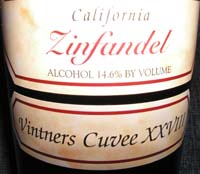Varietal
Varietal refers to a wine made primarily from a single named grape variety, and typically the grape variety is also displayed on the wine label. This concept is most prominently used in the production of wine in countries that follow the wine-making traditions of France; such practices contrast with those in countries following the wine-making traditions of Italy, where wines are often blends of various grape varieties. Varietal wines primarily aim to express the unique characteristics of the specific grape variety used in their production.
Overview[edit | edit source]
The term "varietal" is derived from the word "variety," indicating the focus on a single variety of grape. The concept behind varietal wines is to highlight the unique flavor, aroma, and other characteristics that a specific grape variety can bring to a wine. This approach allows consumers to appreciate the distinct differences between wines made from different grape varieties.
Regulations[edit | edit source]
In many wine-producing regions, there are specific regulations governing the use of the term "varietal" on wine labels. For example, in the United States, a wine must be made from at least 75% of the grape variety that is mentioned on its label to be labeled as a varietal wine. This percentage can vary in other countries, such as Australia and Chile, where the requirement is typically around 85%.
Popular Varietal Wines[edit | edit source]
Some of the most popular varietal wines include Chardonnay, Merlot, Cabernet Sauvignon, and Pinot Noir. Each of these wines showcases the distinct characteristics of its grape variety. For instance, Chardonnay wines are known for their buttery flavors and full-bodied texture, while Pinot Noir wines are appreciated for their delicate aromas and complex flavors.
Benefits and Criticisms[edit | edit source]
The production of varietal wines has both supporters and critics. Proponents argue that varietal labeling makes it easier for consumers to select wines, as it provides clear information about the wine's grape composition. Critics, however, argue that focusing solely on grape varieties can oversimplify the complexity of wine and ignore the importance of terroir, winemaking techniques, and the role of blending in creating complex flavors.
Conclusion[edit | edit source]
Varietal wines play a significant role in the global wine market, offering consumers the opportunity to explore the unique characteristics of different grape varieties. While the debate between the merits of varietal versus blended wines continues, the popularity of varietal wines remains strong, reflecting the ongoing interest in understanding and appreciating the diversity of wine.
Search WikiMD
Ad.Tired of being Overweight? Try W8MD's physician weight loss program.
Semaglutide (Ozempic / Wegovy and Tirzepatide (Mounjaro / Zepbound) available.
Advertise on WikiMD
|
WikiMD's Wellness Encyclopedia |
| Let Food Be Thy Medicine Medicine Thy Food - Hippocrates |
Translate this page: - East Asian
中文,
日本,
한국어,
South Asian
हिन्दी,
தமிழ்,
తెలుగు,
Urdu,
ಕನ್ನಡ,
Southeast Asian
Indonesian,
Vietnamese,
Thai,
မြန်မာဘာသာ,
বাংলা
European
español,
Deutsch,
français,
Greek,
português do Brasil,
polski,
română,
русский,
Nederlands,
norsk,
svenska,
suomi,
Italian
Middle Eastern & African
عربى,
Turkish,
Persian,
Hebrew,
Afrikaans,
isiZulu,
Kiswahili,
Other
Bulgarian,
Hungarian,
Czech,
Swedish,
മലയാളം,
मराठी,
ਪੰਜਾਬੀ,
ગુજરાતી,
Portuguese,
Ukrainian
Medical Disclaimer: WikiMD is not a substitute for professional medical advice. The information on WikiMD is provided as an information resource only, may be incorrect, outdated or misleading, and is not to be used or relied on for any diagnostic or treatment purposes. Please consult your health care provider before making any healthcare decisions or for guidance about a specific medical condition. WikiMD expressly disclaims responsibility, and shall have no liability, for any damages, loss, injury, or liability whatsoever suffered as a result of your reliance on the information contained in this site. By visiting this site you agree to the foregoing terms and conditions, which may from time to time be changed or supplemented by WikiMD. If you do not agree to the foregoing terms and conditions, you should not enter or use this site. See full disclaimer.
Credits:Most images are courtesy of Wikimedia commons, and templates, categories Wikipedia, licensed under CC BY SA or similar.
Contributors: Prab R. Tumpati, MD


